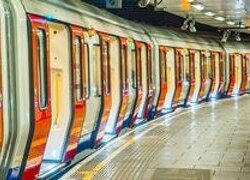IoT can get you back to work

The City of London usually welcomes around 550,000 workers daily. Today that number is closer to 15,000. Why? Because the majority of City workers have to commute by public transportation train, tube or bus to get to work. In the past, says Bart Schouw, chief evangelist at Software AG, this meant sitting or more likely standing in a crowded, hot space with no air conditioning (and not enough people wearing masks).
Today, with the very real fear of catching Covid-19, plus the flexibility companies have given employees to work from home (some indefinitely), few people want to take a chance on public transport. In the meantime, sandwich shops, hairdressers, pubs, gyms and restaurants are empty and many of their owners cannot hang on financially for much longer.
There is a real economic need to get people back to work. And many people want to go back; they miss the camaraderie, the real-life brainstorming, their ergonomic desk set-ups.
What would it take to get you back on the tube or train? What if you could tell before you left home whether the carriages were full or not? You could if you had an app on your phone that could alert you when the trains on your line are less than 50% occupied. Then you could go immediately to the station and travel to work in relative safety. Or, if the subway/tube was chock-a-block but the next few buses approaching your area were relatively empty, you could choose to take the bus instead.
Is the train full?
If you live outside London, the app could tell you not just when the trains were quieter, it could also anticipate in advance based on recent history when it should be quieter. And what if the app told you how many seats were occupied on each carriage of your train? You could choose the least occupied carriage, grab a seat and get to work safely.
In Sydney, in-built sensors under the axle of each train calculate carriage weight data to estimate how busy a particular train service or carriage is. If you put devices under the seats of train carriages to detect weight, you could see which seats were occupied seat in real time.
Combine this with some kind of anonymised facial recognition and a movement sensor and you can tell how many people are likely to get off at the next stop. This is not just important during the pandemic, but also any time you are looking to travel. No one wants to stand on a train for an hour-plus journey.
IoT to the rescue
All of this is possible with the Internet of Things (IoT). IoT sensors in stations, on platforms, in carriages, under seats and on buses could send data to a platform where it is analysed to tell you how busy each one is. You could get alerts on your phone in real time; data could be fed into a journey planner to calculate the various best routes according to occupancy.
Then, once you get to the office you pin on your smart social distancing badge to make sure you don’t get too close to your co-workers. These Bluetooth-enabled badges interact with beacons placed at cluster points throughout the workplace. The data is then processed through an IoT platform and helps employees protect themselves by beeping when they are too close to one another.

Bart Schouw
While health and safety teams can trace contact with any employee showing symptoms. You, as an employer can fulfil your duty of care and show the compliance that allows you to remain operational. These badges are already proving to be far superior to smartphone apps that some governments are trying to use for track and trace.
It’s not just getting back to work that the IoT can help resolve. In Singapore, both the government and start-ups are working with IoT and artificial intelligence (AI) to keep citizens safe and to help the battered tourism industry recover. If you go to the park, you may hear a voice requesting you to observe safe distancing measures.
There is no uniformed official behind you, rather Spot the robot dog built by robotics innovator Boston Dynamics. Spot was also used in a pilot project to deliver medicines to patients in a Covid-19 community isolation facility.
Singapore has also implemented a national digital check-in system a smartphone app that logs the name, identity card number, and mobile number of people entering busy public buildings where they might more easily catch the virus.
Smart city initiatives may have been stalled by the Covid-19 crisis, but the efficiencies and safety that IoT can provide are causing a rethink. Smart cities are seeing that operational efficiencies can help them to dig their way out of the crisis by using data.
As Winston Churchill said, never let a good crisis go to waste. The Covid-19 pandemic could well be the catalyst for truly connected smart cities making our lives safer, healthier and more productive.
The author is Bart Schouw, chief evangelist at Software AG
Comment on this article below or via Twitter @IoTGN
